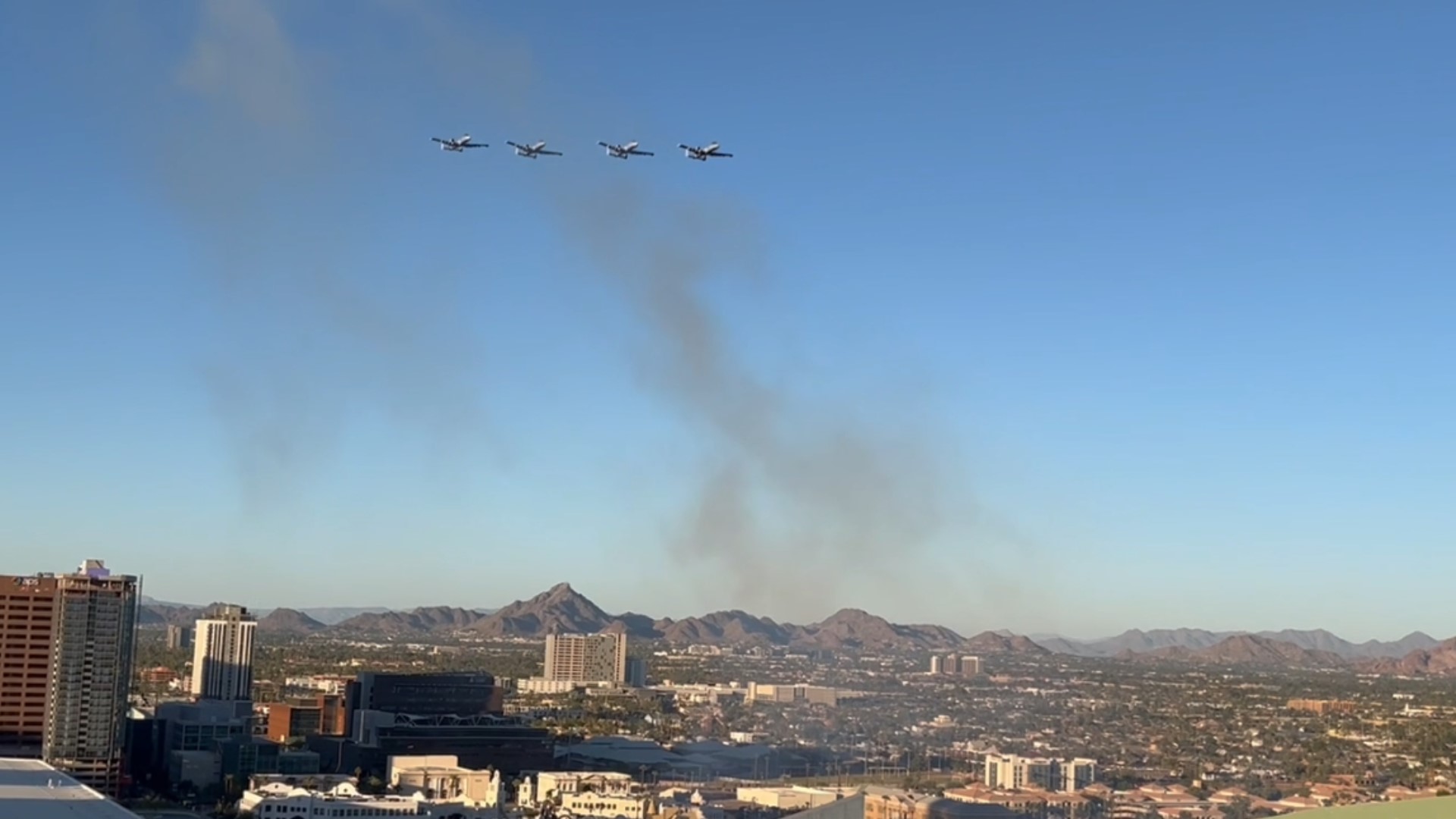PHOENIX — We're back with more flyover coverage. Game 3 involved a four-ship formation of F-35 fighters from Luke Air Force Base. Game 4 draws from a little further south: A-10 Warthogs from Davis-Monthan Air Force Base in Tucson.
Here are the deets:
What is the A-10 Warthog?
The A-10 is an attack airplane built by Fairchild Republic that is a child of Cold War thought. The plane was basically built around a giant gun designed to destroy Soviet tanks as they poured through the Fulda Gap in Germany. With the end of the Cold War, the Warthog (its real name is supposed to be the "Thunderbolt II," but nobody ever calls it that) found a new mission: Close-air support. Warthogs flew in Iraq and Afghanistan using that huge cannon to help U.S. and allied troops that were in close contact with the enemy. The cannon makes a distinctive noise that sounds like "brrrrrrrrrt," and it has saved thousands of lives.
You have probably seen the A-10 in movies; it's been in Terminator: Salvation and in Smallville. They're the modern planes that are often painted with a shark's mouth or javelina tusks. In one case, the Indiana Air National Guard squadron that flew the A-10 was nicknamed the "Blacksnakes" and painted the noses of its jets to look like snake heads. It's a plane that lends itself to being a palette.
The Warthog is controversial since the Air Force keeps trying to kill it. In an age where planes are becoming more expensive to produce and are increasingly reliant on stealth technology and electronics, a giant flying tank that doesn't even have built seems out of place. And the Air Force, strapped for cash, keeps wanting to end the A-10 program and spend the money on F-35s. But ground troops love them and Congress keeps fighting for the program (former Arizona senator and A-10 pilot Martha McSally was one of the strongest proponents of this). The Air Force has set a 2028 date for the venerable Warthog to be retired. But that's happened before.
What does the "A" stand for?
"Attack." In military parlance, an A at the beginning of a plane type means its primary role is to blow stuff up on the ground rather than in the air. Thus, the "A" in A-10 and in the A-7 that the Arizona Air National Guard used to fly. The distinction is less important now than it used to be as the U.S. military has developed a preference for planes that can do multiple things. A-10 squadrons are still called "fighter squadrons," in keeping with an Air Force tradition.
How does a flyover work?
The flyover is all about math and communication. The planes will take off from Davis-Monthan or Luke, if they've previously flown there, and will wait to be called in.
An A-10 pilot, or pilots, will be in the stadium talking to the flyover planes about timing. In a perfect world, the planes cross the far edge of the stadium just as the National Anthem ends. It's really a math equation: How long will it take the planes flying X speed to make it Y miles at the right time?
Who will be in the cockpits?
The pilots will be from the 924th Fighter Group based at Davis-Monthan Air Force Base in Tucson, Arizona. The 924th is an Air Force Reserve Command squadron that trains pilots to fly the A-10.

